
One of the biggest factors in how well cars sell in a given market is how many dealer franchises the automaker has at a given time. Here’s a breakdown of how many domestic dealers each U.S. automaker had between 1966 and 1969.

When it comes to automotive history, dealer franchises are an important topic that gets less attention than it probably should. For instance, if you’re trying to analyze why Model X didn’t sell as well as Model Z, the fact that Model Z was sold through twice as many dealers is obviously a very significant point!

Unfortunately, that information isn’t terribly easy to find: The Automotive Industries statistical issues stopped presenting that data after 1950, and while Automotive News included franchise census tallies in its annual almanacs, the older issues are rather scarce these days. However, I recently found this table in the appendices of some 1967 Senate select committee hearings on small business. This is from the April 24, 1967 Automotive News almanac, but it was entered into the congressional record, which is public information.
The 1968 and 1969 tables were then included in the record of some 1969 Senate subcommittee hearings on monopoly and the role of giant corporations. Since those images aren’t always super legible, I compiled the totals into a new table:
Total Dealer Franchises of U.S. Automakers, 1966–1969
| Marque | 1966 Franchises | 1967 Franchises | 1968 Franchises | 1969 Franchises |
|---|---|---|---|---|
| American Motors | 2,636 | 2,462 | 2,347 | 2,294 |
| Chrysler | 3,499 | 3,501 | 3,598 | 3,632 |
| Dodge | 3,128 | 3,120 | 3,266 | 3,319 |
| Imperial | 1,432 | 1,429 | 1,447 | 1,464 |
| Plymouth | 3,826 | 3,780 | 3,834 | 3,832 |
| Ford | 6,245 | 6,145 | 6,005 | 5,896 |
| Lincoln | 1,045 | 1,094 | 1,188 | 1,263 |
| Mercury | 2,520 | 2,546 | 2,605 | 2,628 |
| Buick | 3,120 | 3,104 | 3,100 | 3,090 |
| Cadillac | 1,655 | 1,641 | 1,637 | 1,635 |
| Chevrolet | 6,596 | 6,507 | 6,410 | 6,365 |
| Oldsmobile | 3,460 | 3,446 | 3,392 | 3,390 |
| Pontiac | 3,490 | 3,450 | 3,395 | 3,390 |
| Studebaker | 1,503 | 0 | 0 | 0 |
| AMC, net | 2,636 | 2,462 | 2,347 | 2,294 |
| Chrysler, net | 6,506 | 6,421 | 6,282 | 6,217 |
| FMC, net | 7,386 | 7,254 | 7,065 | 6,940 |
| GM, net | 13,595 | 13,470 | 12,780 | 12,690 |
While I was most interested in the franchise totals, you’ll notice that the table above also has a breakdown of exclusive and multi-brand franchises, so I’ve recompiled that into separate tables, which I’ve included below.

Here are some observations about this data:
The late ’60s were a very uneven time for the domestic industry. 1965 and 1966 were good years, but 1967 was awful for most U.S. makes: Total calendar year production fell about 16 percent, and total new car registrations (including imports) fell by 7.2 percent. The market recovered for 1968, but then started to skid again in 1969. All this chaos resulted in some dealer erosion: Each of the U.S. manufacturing groups ended up with fewer total dealers in 1969 than in 1966.

1966 was the last year in the U.S. for Studebaker, which by some miracle still had 1,503 U.S. franchises at the start of the year. Average sales per dealer were quite grim, so I’m surprised so many stuck it out that long. Only 200 Studebaker dealers also had franchises for other U.S. makes, but I think quite a few were dualed with one or more imports. (After the Studebaker plant in South Bend shut down, Studebaker was technically an import, since the cars sold here in its final years were built in Canada.)

Plummeting sales and fast-fading market share cost AMC 13 percent of its dealer base during this period. Between January 1966 and January 1969, they lost 342 franchises, which they could ill afford.

Ford Division‘s dealer network was also taking it on the chin in this period. Total Ford sales slipped badly in 1967, but even though business picked up again in 1968, they continued shedding dealers. (They actually lost more than AMC, although it was a smaller percentage of the total.)

The biggest gain in this period was Lincoln, which added 218 franchises, an increase of 20 percent. There’s been some kibbitzing about whether the addition of the Lincoln Continental coupe for 1966 was really worthwhile, but while the boost it provided Lincoln sales was short-lived, adding new models seems to have done wonders for the confidence of franchise-holders. Lincoln added 49 franchises for 1967 and then picked up 94 more for 1968, probably on the strength of the Continental Mark III.

I was surprised at how many dealers in this period sold Mercury but not Lincoln — Ford-Mercury franchises still greatly outnumbered Lincoln-Mercury ones. There were also some Mercury-only dealers, but it seems Lincoln’s new products convinced a lot of those to also pick up Lincoln. The number of Mercury exclusives fell from 303 in 1966 to 188 in 1969, although total Mercury franchises increased by 108 during the same period.

Chrysler Corporation seems to have done some aggressive salesmanship to convince existing franchise holders to take on additional Chrysler brands. Each of their four brands had more franchises in 1969 than they had in 1966, but Chrysler actually ended up with a net of 289 fewer dealerships than they started out with. Their average new car sales per dealer were much weaker than GM or FMC, and encouraging more multiples may have been an attempt to change that.

I was surprised to see that Plymouth had so many exclusive dealers in this period. They had 603 in 1966, although the total fell to 366 by 1969, probably as a result of Chrysler’s efforts to get more franchise-holders to add multiple franchises.

Below is a detailed breakout of the exclusive and nonexclusive franchises for each brand. It’s not scintillating reading, but it is useful for reference, and having taken the time to recompile the data, I’ll include it here for the benefit of others.
Exclusive and Multiple Franchises of U.S. Automakers, 1966–1969
I should explain that in the following tables, “exclusive” and “multiple” meant within the same corporation: For instance, a Ford exclusive didn’t sell Lincoln or Mercury, but it might conceivably have sold some other domestic make, which would be considered an “intercorporate dual.” (Automotive News did NOT count imports, even captive imports, as intercorporate duals; they tracked import and truck franchises separately.) Also, a “multiple” (a single franchisee holding multiple franchises) was not necessarily a “dual” (multiple franchises combined in the same dealership). For instance, if Joe Blow had Chevrolet and Cadillac franchises, but set up separate stores for each brand (Joe Blow Chevrolet and Joe Blow Cadillac), that would be a multiple; if Joe had one dealership that sold both Chevrolet AND Cadillac (Joe Blow Cadillac-Chevrolet), that would be a dual. (For the purposes of these tables, it would also count as a multiple.)
| Marque | 1966 Exclusives | 1966 Multiples | 1966 Total | 1967 Exclusives | 1967 Multiples | 1967 Total | Change, 1966 to 1967 |
|---|---|---|---|---|---|---|---|
| American Motors | 2,636 | 0 | 2,636 | 2,462 | 0 | 2,462 | -174 |
| Chrysler | 14 | 3,485 | 3,499 | 15 | 3,486 | 3,501 | +2 |
| Dodge | 2,395 | 733 | 3,128 | 2,382 | 738 | 3,120 | -8 |
| Imperial | 0 | 1,432 | 1,432 | 0 | 1,429 | 1,429 | -3 |
| Plymouth | 603 | 3,223 | 3,826 | 528 | 3,252 | 3,780 | -46 |
| Ford | 4,863 | 1,382 | 6,245 | 4,705 | 1,440 | 6,145 | -100 |
| Lincoln | 0 | 1,045 | 1,045 | 0 | 1,094 | 1,094 | +49 |
| Mercury | 303 | 2,217 | 2,520 | 254 | 2,292 | 2,546 | +26 |
| Buick | 1,467 | 1,653 | 3,120 | 1,453 | 1,651 | 3,104 | -16 |
| Cadillac | 200 | 1,455 | 1,655 | 213 | 1,428 | 1,641 | -14 |
| Chevrolet | 4,538 | 2,058 | 6,596 | 4,457 | 2,050 | 6,507 | -89 |
| Oldsmobile | 1,210 | 2,250 | 3,460 | 1,208 | 2,238 | 3,446 | -14 |
| Pontiac | 1,682 | 1,808 | 3,490 | 1,664 | 1,786 | 3,450 | -40 |
| Studebaker | 1,503 | 0 | 1,503 | 0 | 0 | 0 | -1,503 |
| Intercorporate Duals | — | — | 746 | — | — | 705 | -41 |
| Total Dealers | 31,626 | 29,607 | -516 | ||||
| Net Dealers, Excluding IC Duals | 30,680 | 28,902 | -1,778 |
| Marque | 1968 Exclusives | 1968 Multiples | 1968 Total | 1969 Exclusives | 1969 Multiples | 1969 Total | Change, 1968 to 1969 |
|---|---|---|---|---|---|---|---|
| American Motors | 2,347 | 0 | 2,347 | 2,294 | 0 | 2,294 | -53 |
| Chrysler | 13 | 3,585 | 3,598 | 11 | 3,621 | 3,632 | +34 |
| Dodge | 2,248 | 1,018 | 3,266 | 2,210 | 1,109 | 3,319 | +53 |
| Imperial | 0 | 1,447 | 1,447 | 0 | 1,464 | 1,464 | +17 |
| Plymouth | 425 | 3,409 | 3,834 | 366 | 3,466 | 3,832 | -2 |
| Ford | 4,458 | 1,547 | 6,005 | 4,310 | 1,586 | 5,896 | -109 |
| Lincoln | 0 | 1,188 | 1,188 | 0 | 1,263 | 1,263 | +75 |
| Mercury | 213 | 2,392 | 2,605 | 188 | 2,440 | 2,628 | +23 |
| Buick | 1,155 | 1,945 | 3,100 | 1,100 | 1,990 | 3,090 | -10 |
| Cadillac | 233 | 1,404 | 1,637 | 235 | 1,400 | 1,635 | -2 |
| Chevrolet | 4,390 | 2,020 | 6,410 | 4,340 | 2,025 | 6,365 | -45 |
| Oldsmobile | 1,015 | 2,377 | 3,392 | 955 | 2,435 | 3,390 | -2 |
| Pontiac | 1,245 | 2,150 | 3,395 | 1,210 | 2,180 | 3,390 | -5 |
| Studebaker | 0 | 0 | 0 | 0 | 0 | 0 | 0 |
| Intercorporate Duals | — | — | 690 | — | — | 655 | -35 |
| Total Dealers | 28,474 | 28,141 | -333 | ||||
| Net Dealers, Excluding IC Duals | 27,784 | 27,486 | -298 |
The Senate hearings appendices also include tallies for import franchises in this period, which I might put together separately.
Related Reading
What Cars And Trucks Did Americans Buy In 1969? – A CC Auto Yearbook Feature (by me)
Vintage Photos: Chevrolet Dealers In The 1960s & 1970s (by Rich Baron)
Vintage Postcards: Ford Dealers In The 1960s-1970s (by Rich Baron)
Vintage Postcards: Buick Dealers In The ’50s, ’60s & ’70s (by Rich Baron)
Vintage Postcards: Dodge Dealers In The ’50s, ’60s & ’70s (by Rich Baron
Vintage Postcards: Rambler Dealers In The 1960s (by Rich Baron)
Vintage Postcards: Pontiac Dealers In The 1960s (by Rich Baron)
Vintage Postcards: Cadillac Dealers – 1950s to 1970s (by Rich Baron)




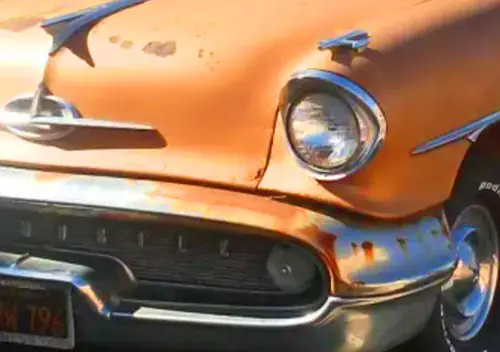
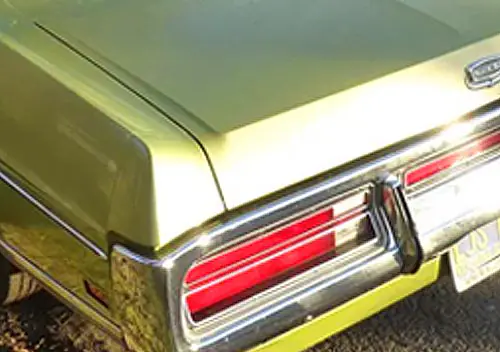
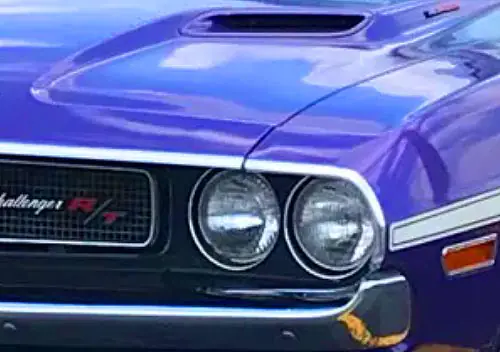


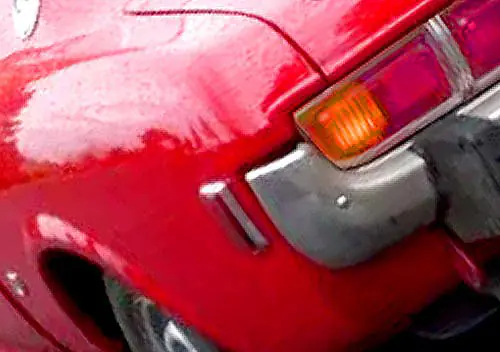

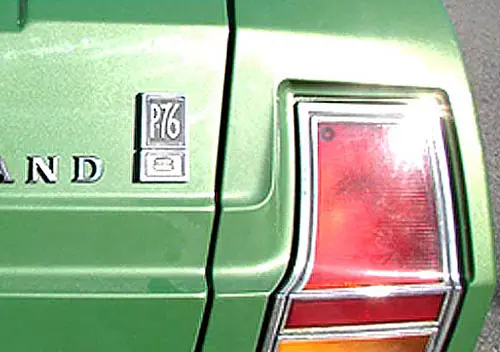
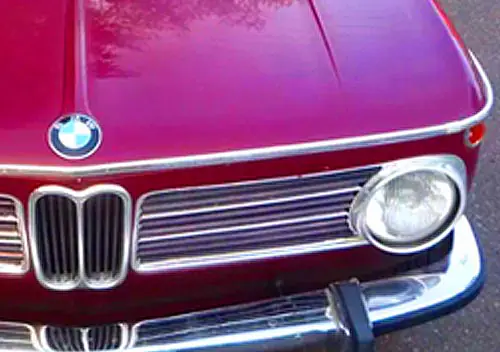

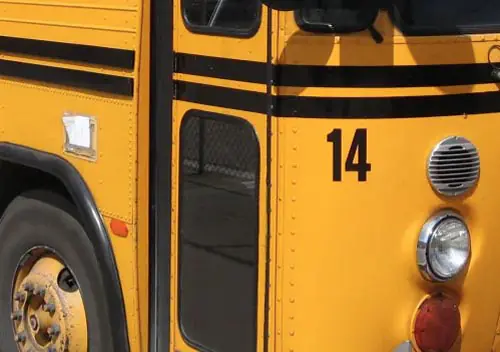
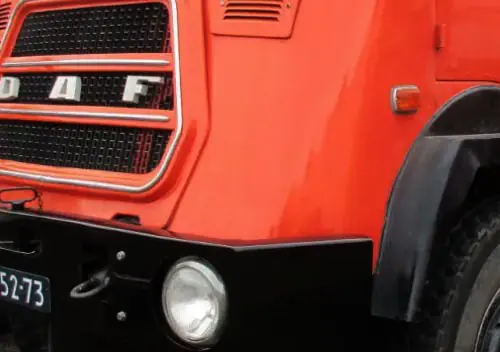
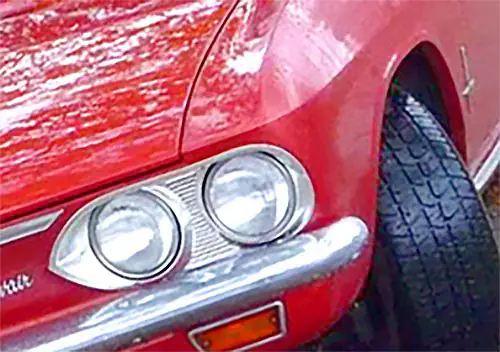
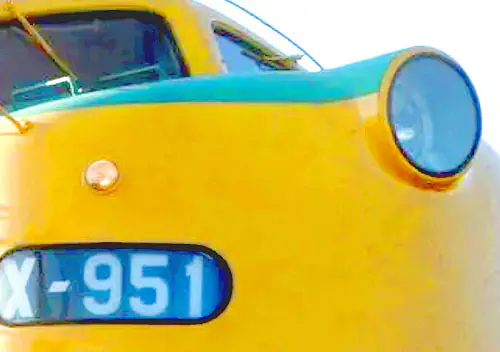
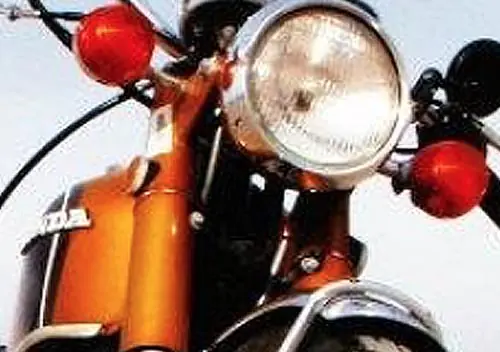
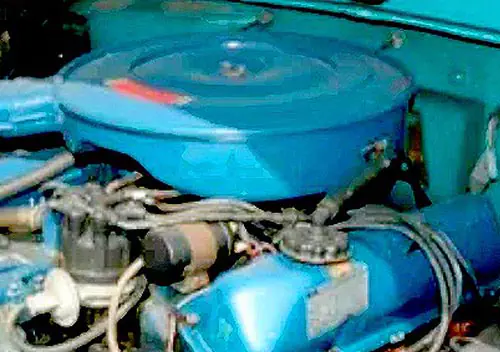
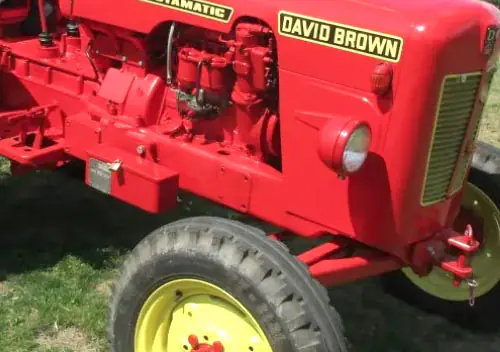
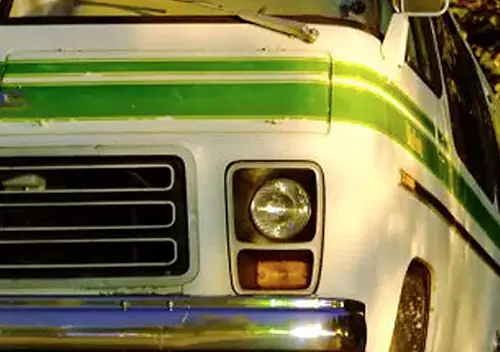

By economic logic, the most popular brand in a company can sustain more exclusive dealers. This was true for Chevy and Ford, but Chrysler’s long policy of dualling Plymouth broke the rule. Those dual dealers preferred to sell the more profitable side of their pair, so Plymouth got shorted. Your stats show this pattern nicely.
I can only assume that Plymouth got really hammered when Chrysler started encouraging more franchisees to also take Dodge. Plymouth had also been dualed with Dodge and DeSoto through 1959, but that had also mostly kept Dodge from trying to compete in the Plymouth realm as they did in the ’60s.
The loss of dealers over the past has come at the expense of small towns. In 1970, our town of 3,000 population had two franchised new car dealers. Today, with 5,000 population, we have no dealerships. Those local jobs and the tax base have vanished across America. I currently drive 50 miles to do business with a small town, family owned Ford dealer. I have often wondered if AMC or maybe Saturn had pursued a network of small town dealers; would they have survived. Might have been a missed opportunity for them.
While anecdotal to a degree, I have seen similar happen at a rural location south of me. For decades it was a reasonably successful GM dealer, located in a county currently having a population of 8,400. The building was nice but obviously not new and nothing flashy. It was highly functional – which reflected the area. It’s low overhead could be realized in sales price as the dealer brought in customers from a rather large area, with this area being predominantly GM owning.
However, about six or seven years ago, GM corporate dictated the dealer must spend some astronomical amount to upgrade the building to match current “GM dealer branding”. The dealer told GM to screw off and closed up shop. Now, persons there must drive either 40 minutes north or 30 minutes south to visit a GM, Ford, or Chrysler dealer.
Incidentally, the town 30 minutes south has no dealers for anything other than Ford, GM, and Chrysler. That is not atypical in my part of the world.
My home county of Mercer County in rural west – central Illinois c. 1970 had a population of 17,000 and the county seat, Aledo, had 3,000 people. Aledo (the only county town that had car dealers) had a Ford – Mercury dealer, stand – alone Dodge and Oldsmobile dealers, a Chrysler – Plymouth dealer, and an AMC – Pontiac – Buick – Cadillac dealer. The Chrysler – Plymouth dealer also sold Frigidaire appliances and John Deere farm implements; the small Olds dealer (which was so small that the ‘showroom’ could only hold two cars) also sold farm implements…
All are long – gone, now there is one car “superstore”, part of a Midwest chain, that sells Chevy, RAM, GMC, Jeep, Chrysler, Dodge, and Buick… for anything else one has to travel to the nearby IA/IL Quad Cities, Muscatine IA, etcetera…
This info is a wonderful “find,” and I thank you for presenting it along with the tale it tells. Nicely done—and I’m sure I’ll be back to consult this one in the future. Bravo!
Aaron, thank you for compiling this.
The website Studebaker-info.org has a list of known Studebaker dealers in the US, broken down by state. It is fascinating with lots of ads and pictures, some of which I’ve used in the past.
But to your question about Studebaker still having that many dealers in 1966…
I was scanning the various dealers in Missouri, looking for one in particular that could provide some texture to your question. What I found (I’d seen it long ago) was one particular dealer in the town of Lebanon. Below is a link to an article contained within the dealer listing. The Studebaker dealer in Lebanon was an inter corporate affair, but with John Deere. Looking at some of the other dealers in Missouri shows similar in some cases (one dealer was owned by a company that was also a grocery distributor).
In short, this makes me wonder if, in some locations, Studebaker was simply a side hustle and not the primary product being sold.
https://studebaker-info.org/Dealers/tw0993p24.jpg
https://studebaker-info.org/Dealers/MOdealers.html#mol
Selling Studebakers couldn’t have been the main hustle for those 1,503 exclusive dealers, which sold an average of about 1 car a month in 1966 (total ’66 production was under 7,000, ending in March). Most of them I’m assuming also sold an import (or two or three or four), or non-automotive items. If some Stude dealers were selling John Deeres, maybe some were selling Gravely tractors which at the time was a Studebaker product.
The late ’60s seems to be when lots of American-car dealerships started taking on some imports en masse, though probably not as much as the early-mid ’70s.
Keep in mind that selling service and parts was always a large (and often primary) source of revenue and profits for dealers.
The Studebaker dealer in Iowa City survived doing that for a year or so before taking on a Toyota franchise, which turned out to be a very good move. I think Toyota was likely the most common new franchise taken on by Studebaker dealers as it coincided with a big push by Toyota to expand their nationwide presence in those years.
Yup. The last year Automotive News tracked sales per dealer for Studebaker was 1965, when it was only 8 cars per dealer — not eight cars per month, eight cars for the year. Surprisingly few former Studebaker dealers actually went under when Studebaker closed up shop: According to Dun and Bradstreet, there were 116 new car dealer business failures in 1966, which was a lot less than the tally of Studebaker franchises, so most must clearly have had other business lines.
The 1957 deal with Mercedes-Benz also gave several Stude dealerships a profitable line of cars to sell and service. At least one of my local Mercedes dealers, formerly known as American Service Center, made that transition; I believe they were a Studebaker-only dealership until they took on M-B which is all they sell today.
I still find it weird thinking the 300 SL and Scotsman once shared a showroom…
Well, yes and no. Mercedes-Benz sales were much, much smaller then than they were later, and Studebaker dealers often weren’t up to selling that kind of car. Until they set up their own U.S. organization, Mercedes average sales per dealer hovered at 30 to 40 cars per year, less than half where they were at by the end of the ’60s. So, I think in practice, no one on either side ended up all that happy with how things turned out. Heinz Hoppe of Daimler-Benz North America later complained, “I tried repeatedly to persuade Studebaker to invest more in after-sales service, and particularly to set up regional spare parts stores, but those in command at the American company either failed to see the need for this or simply had no funds to tackle the task.”
Regarding import duals, they actually declined during this period except for captive imports (Opel, English Ford, Chrysler-Simca, and Chrysler-Rootes). Non-captive import-domestic duals were about 1,900 at the start of 1966 and fewer than 1,200 by the beginning of 1969.
Makes sense, there was a major shakeout of import makes in the US in the early ’60s off the high of the 1957-9 boom and another with the introduction of FMVSS starting in 1968. Much is made of the Japanese ascendancy but that was still mainly just Toyota and Nissan/Datsun who were looking to sign up only one dealer each in any but the most major cities.
Total import franchises peaked in 1959, then started dropping off in the early ’60s, bottoming out in 1964. However, the total increased every year after that. There really wasn’t a major shakeout due to the 1968 federal standards — Daimler and DAF dropped out by 1967, and Amphicar and Glas withdrew by 1968, but none of them had a perceptible U.S. presence anyway — and total import franchises increased by 8.6 percent from 1967 to 1968.
This seems to be about the time imported brands got serious about having strong US dealerships. In the ’50s and early ’60s many imports were sold as a sideline to a US marque, or at a dealer that sold about five different import brands, or a dealer that largely sold non-automotive products. Service was inconsistent and parts availability was wanting – “it’s on the ship, it’ll be here soon”. A big part of Volkswagen’s success in the States was realizing this early on, having well-trained sales and service staff in nice buildings.
Yes — during its final years, average Studebaker sales per dealer dropped to 15, then eight, then probably something less than that for 1966. Selling one Studebaker a month (or thereabouts) wasn’t likely to keep the lights on, so they must have had other franchises — a bit of this, a bit of that, so long as the combined total added up to something workable.
To my frustration, Automotive News mostly tracked U.S., import, and truck franchises separately, and it’s not detailed enough to make many correlations. For instance, some Studebaker dealers had various import franchises, and I’m sure that some had truck franchises. (International and Jeep both had a surprisingly large number of franchises in this period also, but their sales per dealer were also quite low, so I assume many of those franchises were dualed with something else, and an independent like Studebaker was probably more likely than a GM, Ford, or Chrysler franchise.)
I also wonder how many of them, as is sometimes the case with Mitsubishi now, were primarily high-volume used-car operations that had Studebaker as a “new-car shingle” that allowed them to offer their used customers better financing?
Regarding Studebaker technically being an import since all of their cars from calendar year 1964 onward were built in Canada, did Studebaker management, at least for the automotive division, move to Hamilton or did they stay in South Bend? Or did the automotive-related jobs all go to Canada (save for building engines for late-’64 cars) while their acquired non-automotive businesses were still run from South Bend, or somewhere else in the US?
The Studebaker sales organization and international division stayed in South Bend, I think till the bitter end. The corporate board was in New York, which I don’t think changed. U.S. production and all the R&D and styling operations just ended. Very little moved to Canada — the Hamilton plant had been running for some years, so the assumption was that it could keep going for a while longer because its costs and overhead were low enough to greatly reduce the overall break-even point. Since there was really no more development after the end of 1963, it was a holding action, and some people have suggested over the years that the real object was to starve out the remaining dealers in hopes of minimizing the company’s eventual franchise-termination liability.
Once Studebaker took on the Mercedes-Benz distribution in 1957, and with uneven sales in subsequent years, many of their dealerships took on other makes, frequently imports as hedge against the down years.
Internal management documents in the 1961-’63 Egbert years discussed the quality and effectiveness of the dealer body. The conclusions were grim, only one-third were effective at merchandising the cars, the majority had other lines, agricultural implements, household appliances, lawn care machines, industrial supplies which consumed most of their time.
Studebaker was affectively done when the bankers would no longer finance the floor plan loans for new car inventory for fear should the company ceased production the remaining inventory value couldn’t be sold to cover the loans.
The only remaining Studebaker buyers were the long-term loyalist who also had a trust relationship with their dealer. Issues of resale value matter not to them, they’d stay to the bitter end.
I know there are more than a few who are curious about radio commercials for car dealers. I’ve uploaded 90 minutes of 1950s Minneapolis-St. Paul commercials to Archive.org of which these might be of interest:
Swanberg & Scheefe Buick
Friendly Chevrolet (“…is not interested in profit”!)
Wayzata Motors (Dodge & Plymouth)
Velie Motors (1957 Oldsmobile)
Champion Chevrolet
Town’s Edge Olds
Brellantine Chevrolet
Loop Motors (Quitting Chrysler to sign up as an Edsel dealer!)
Minar Ford (1958s are in)
Hatfield-Queenan Dodge
Velie Olds (1959 models)
Whittaker Buick
Hopkins car dealer, unnamed
King Dodge (1956 models)
Southview Chevrolet (1958 models)
Larson Chevrolet ($2,087 for a new ’57, heater and turn signals standard)
Anoka Ford
Twin City Plymouth Dealers (1959)
Melman Pontiac (1958 models)
Ford (Tony Bennett sings the praises of the ’58)
Larson Chevrolet (Used car sale)
Chrysler Dealers promotion
Whittaker Buick ($2595.83 for a new ’57)
Pentel Chrysler
The above are mixed in with many other commercials. They’re not indexed but are easy to find since I’ve listed the running order of everything. They all come from 16″ “electrical transcription” discs and plenty of them are very hokey. Being the ’50s and all.
https://tinyurl.com/66cr7pte
I had some interesting takeaways from this post…
Neither Lincoln nor Imperial had any standalone dealers. In the years since Mercury became deceased, I believe there are quite a few standalone Lincoln dealers.
There were only 300 standalone Cadillac dealers. I have to assume they were mostly in densely populated areas, surviving on volume.
Fifteen standalone Chrysler dealers surprised me. In those days (not unlike now) the Chrysler brand basically sold one car, albeit in 13 “models”. I can’t imagine how that was enough to keep the lights on at a single-marque dealership.
If you talk about single-marque dealerships, AMC is in third place. Plucky lot, those dealers must have been.
It’s important to emphasize that the totals are for dealer franchises rather than dealer stores. I think quite a few franchisees had multiple franchises that weren’t dualed. Let’s say John Doe had a Cadillac franchise with a showroom downtown and a Chevrolet dealership a couple miles away. Those would still be considered multiples, not exclusives, because of their common ownership.
(I don’t know how strict Automotive News was about counting that: For instance, if John Doe organized his Cadillac and Chevrolet stores as separate corporations or LLCs to keep their assets separate, I’m not sure if that would be enough degrees of separation to be considered exclusives. I guess it depended on how the dealers themselves regarded it.)
Also, because AN insisted on separating domestic cars, imports, and domestic trucks, the exclusives have to be regarded a little cautiously. For instance, an AMC dealer who also had Datsun and International Harvester franchises would still be listed as an exclusive because AMC had only one brand.
I wonder if they counted imports and trucks separately within companies.
Would a Buick-Opel-GMC franchise in a single store be counted as a Buick exclusive on the “main” list, an Opel exclusive on the import list (…when Opel in the US effectively had no exclusives, they were always in Buick stores) and a GMC exclusive on the truck list? Wow.
Yeah, trucks were treated separately. It’s kind of maddening from a modern perspective because trucks have been so mainstream for so many years, but back then, they were considered a different, less important thing. GMC had between 2,800 and 2,900 franchises in this period, but each franchise sold an average of maybe 40 or 45 trucks a year, so I’m assuming most were dualed with some GM passenger brand.
Opel had a surprising number of franchises: about 1,300 in 1967, almost 1,900 at the start of 1969. All of them were dualed with Buick, so by 1969, roughly 60 percent of Buick dealers also sold Opel.
Would love to know the number of VW dealers in the late 60s. They were the only import that was mainstream and sold in significant numbers.
By mid-1969, VW had more than 1,000, the large majority of them exclusives.
Thanks for a great analysis as always! I do wonder, in these years, just how much dealer consolidation was happening? I can recall through the 80s, if not into the 90s, you might have a small dealer operating what looked more like a 2 bay service station called something like “Joe Blow’s Garage”. They may have a bit of inventory or perhaps would just order you what you wished. Probably sell a few trades & used cars on the side. It seems though like in the 90s at least, dealerships were forced to adhere to brand standards & therefore create larger showrooms & service centers, even in smaller areas.
So what are the current stats across the industry in our majority light truck and international brand world?
Someone mentioned rurals. Dealers have also left cities. The cities of Newark and Elizabeth in NJ have 450k people and while they don’t buy cars like rest of state they still conservatively bought 6000 new cars in 2024 minimum. Many are bought in nearby Hillside and Union but still it is odd these large cities lost all their dealers before 2000.
Very interesting. Being Canadian our dealerships networks were similar but different. In my hometown in central Saskatchewan (population about 25,000) we had nine dealerships in 1966:
Chevrolet-Oldsmobile (and Envoy)
Pontiac-Buick-GMC-Cadillac (and Vauxhall)
Ford
Mercury-Lincoln-Meteor (and British Ford)
Plymouth-Chrysler-Fargo
Dodge-Chrysler
Rambler-Volkswagen
Studebaker-Jeep-Datsun
Austin-Morris
The Studebaker dealer also sold travel trailers, motor homes, snow mobiles and other recreational machines.
By 1969 the Plymouth-Chrysler dealership went broke and the Rambler-Volkswagen dealer picked up the franchise and dropped Rambler and Volkswagen. Volkswagen shortly thereafter got a stand alone dealership but AMC was basically gone although there were a few attempts to re-open. The Studebaker dealer transitioned nicely to Datsun and survived into the 1990s. Many a Lark was traded in on a Datsun 510. Austin-Morris didn’t last and a Toyota dealership opened up by 1969 also selling travel trailers and motorcycles.
Interestingly enough by 1969 the largest dealer was the Mercury dealer who sold a ton of Meteors and quite a few other Mercurys from Comets to Marquis. I also seem to remember more Lincolns than Caddilacs as well.